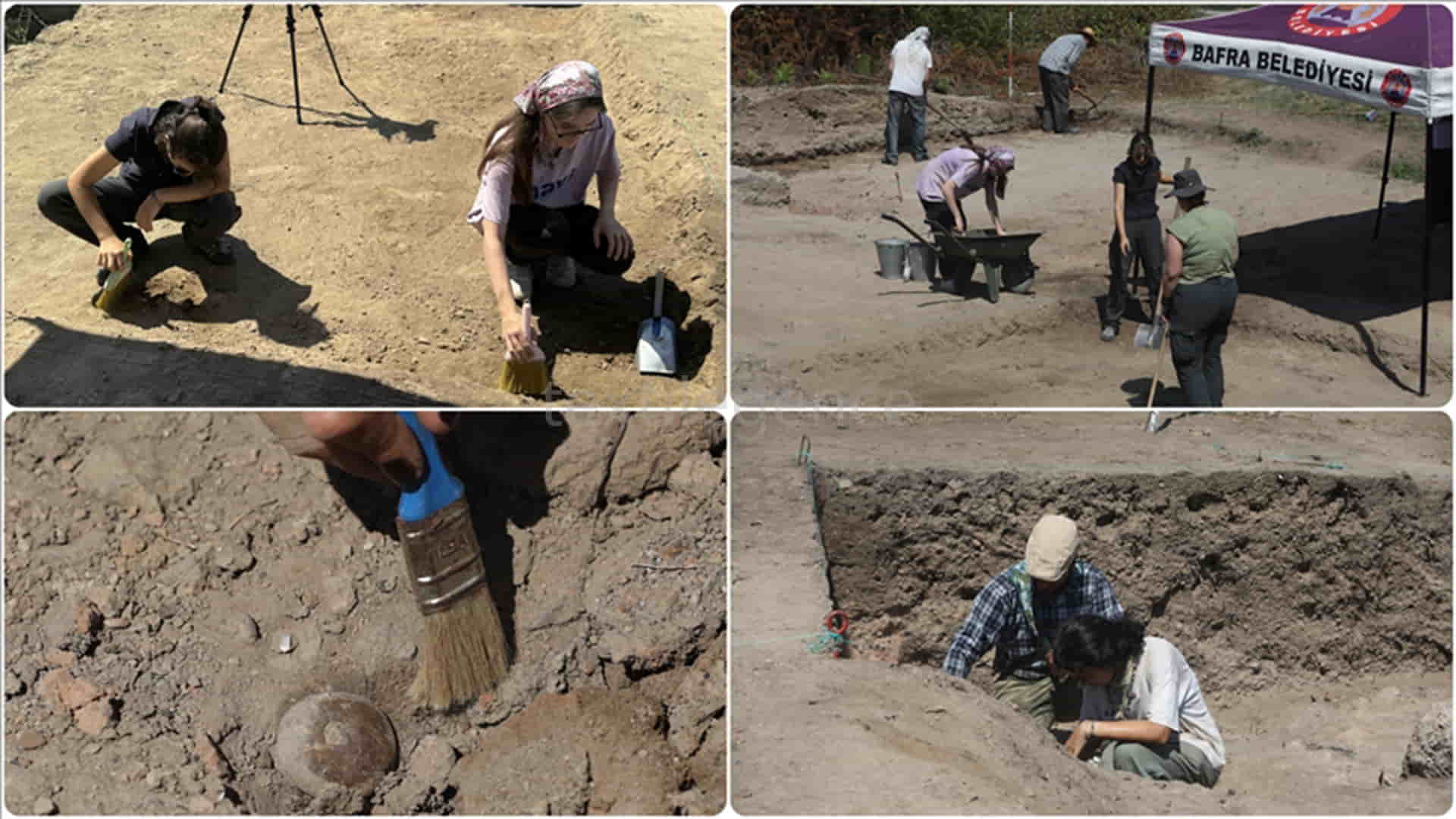The excavations at İkiztepe Mound, which began in 1974 in the Bafra district of Samsun and has brought to light nearly 15,000 archaeological findings, are shedding light on the history of weaving in Anatolia. Located within the borders of İkiztepe village and has been ongoing intermittently for 50 years, the findings unearthed during the excavations at İkiztepe Mound reveal that there was an uninterrupted settlement in the region from 4500 BC to 2000 BC. The fact that approximately 5,000 of the findings are loom weights used in weaving provides important information about the history of weaving in Anatolia.
Assoc. Prof. Dr. Aslıhan Beyazıt, a faculty member at the Archaeology Department of the Faculty of Letters at Istanbul University and the head of the excavation, told AA that İkiztepe is an important and strategic settlement for both the Black Sea archaeology and the archaeology of Central Anatolia and North Central Anatolia in connection with the Black Sea.
Assoc. Prof. Dr. Beyazıt stated that there is an uninterrupted settlement in the region when its chronology is examined and commented: “İkiztepe settlement consists of 4 hills. We are working on the point we call Hill 1. It is a very large settlement. In fact, it is the largest settlement in the Bafra Plain. It has an area of approximately 66 acres. Therefore, we are currently working on the largest hill of this 66-acre area.” Beyazıt said that the most basic aim of the 3rd-period excavations is to work a little more interdisciplinary way and reveal what kind of a social and economic life the ancient İkiztepe, or perhaps the ancient Bafra people, who lived here had.
İkiztepe is one of the most important centres where weaving artifacts were discovered
Assoc. Prof. Dr. Aslıhan Beyazıt, pointed out that the most findings in the İkiztepe excavations were the materials used in textile production, saying: “There was very intensive textile production in İkiztepe. It is already a known fact that it was very intensive. Approximately 5 thousand loom weights used in weaving, heavy spindles, spindle whorls used in yarn spinning, loom combs were found in large numbers in the excavations”.
Stating that the density of loom weights found even in the remains of tiny structures shows that weaving was an activity that took place in every home, Beyazıt continued her words as follows: “Of course, there are also contemporary settlements in Anatolia, but İkiztepe is one of the most important centres where such intensive weaving-related findings were found. In this sense, we see that textile production was very intense. They were probably trading it. This is also a question mark. Were they receiving metals in return for this production? Or, they were turning the metals, or rather the metal, into ingots and perhaps processing them here. Therefore, when we look at the economy of the İkiztepe people, textiles and of course mining become prominent.”

Analysis shows that plant fibres rather than wool are used in textile production in İkiztepe
Assoc. Prof. Dr. Beyazıt underlined that textile-related findings were definitely encountered in other excavations in Anatolia, especially in contemporary settlements, but what distinguishes İkiztepe is that it contains a very high concentration of weaving-related materials, and noted the following:
“The fact that textile-related findings are very dense and continuous in excavations, in other words, we come across approximately 350-400 weaving weights every season. This actually brings İkiztepe settlement to the forefront among other centres of textile production in Anatolia. In other words, the fact that there is very dense textile production here shows us that there is a very knowledgeable and hardworking people, productive people in terms of textiles in İkiztepe. In textiles, instead of wool, the analyses conducted show us that plant fibres were used. Like linen, hemp. This is also important because it is not available everywhere. While sheep and goats can be easily found everywhere in Anatolia in every excavation, production from plant fibres is a little less. In this sense, İkiztepe becomes prominent again. There was intense textile production here between 4500 and 2000 BC.”


